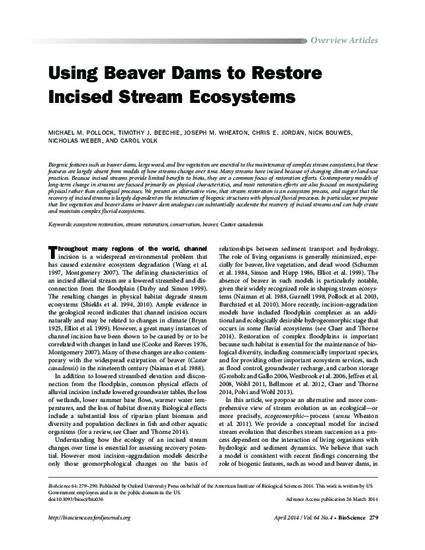
Article
Using Beaver Dams to Restore Incised Stream Ecosystems
Bioscience
(2014)
Abstract
Biogenic features such as beaver dams, large wood, and live vegetation are essential to the maintenance of complex stream ecosystems, but these features are largely absent from models of how streams change over time. Many streams have incised because of changing climate or land-use practices. Because incised streams provide limited benefits to biota, they are a common focus of restoration efforts. Contemporary models of long-term change in streams are focused primarily on physical characteristics, and most restoration efforts are also focused on manipulating physical rather than ecological processes. We present an alternative view, that stream restoration is an ecosystem process, and suggest that the recovery of incised streams is largely dependent on the interaction of biogenic structures with physical fluvial processes. In particular, we propose that live vegetation and beaver dams or beaver dam analogues can substantially accelerate the recovery of incised streams and can help create and maintain complex fluvial ecosystems.
Keywords
- ecosystem restoration,
- stream restoration,
- conservation,
- beaver,
- Castor canadensis
Disciplines
Publication Date
2014
DOI
doi:10.1093/biosci/biu036
Citation Information
Joseph M. Wheaton. "Using Beaver Dams to Restore Incised Stream Ecosystems" Bioscience Vol. 64 Iss. 4 (2014) p. 279 - 290 Available at: http://works.bepress.com/joseph_wheaton/67/
